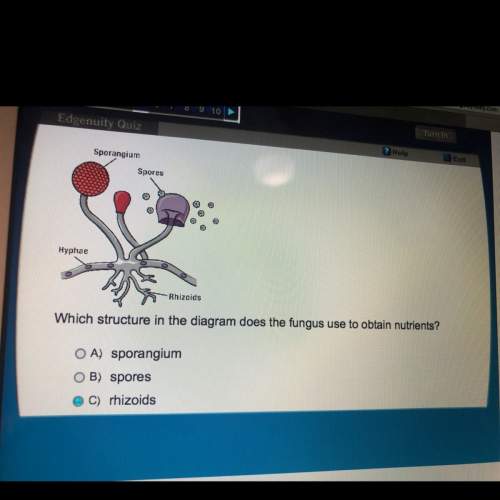
.(02.01 mc) in the human stomach, chemical reactions take place in an acidic environment. some of these reactions are catalyzed by enzymes. how would these enzymes most likely function in an environment where the ph was doubled? (2 points) the rate of the reactions that are catalyzed by the enzymes would double. the rate of the reactions would increase as the ph is increased. the enzymes would not be able to function properly outside of their optimal ph range. the enzymes would interfere with chemical reactions by bonding with the reactants.

Answers: 2
Other questions on the subject: Biology

Biology, 21.06.2019 18:00, gora2005
1. the passing of is the basis of heredity. 2. our encode the instructions that define our traits. 3. each of us has thousands of genes, which are made of and reside in our chromosomes. 4. in addition to our genes, the we live in also define our traits. 5. humans have two complete sets of chromosomes. 6. when parents conceive a child, each parent contributes set of chromosomes. 7. every child receives of its chromosomes from the mother and half from the father. 8. this transfer takes place at when the father’s sperm joins the mother’s egg. 9. while most cells in our bodies have two sets of chromosomes, or a total of egg and sperm each have chromosomes. 10. when egg and sperm unite they create a single cell called a 11. each parent contributes complete set of chromosomes to their child. 12. since the parents contribute the chromosomes to each new child, every child inherits a unique set of chromosomes. 13. as a result, every baby will have a combination of traits.
Answers: 1

Biology, 22.06.2019 11:30, RSanyuathey711
Suppose that on a small island off the coast of scotland, 32 percent of the population has blue eyes, which means that these individuals must be homozygous for the blue eye color gene (bb). the only other eye color found on the island is brown, and individuals that are homozygous for the brown eye color gene (bb) or heterozygous (bb) will have brown eyes because brown is the dominant gene. assume this population is in hardy-weinberg equilibrium. if 100 babies are born next year, how many of these would you expect to have brown eyes and be heterozygous? a. 58 b. 49 c. 29 d. 43
Answers: 1

Biology, 22.06.2019 12:30, justijust500
Consider the equation s + o2 ? so2. what is the product? question 3 options: s so 2 s + so 2 o 2
Answers: 3

Biology, 22.06.2019 17:30, keke6361
Sally, age 3 months, has a moist, red, vesicular rash on her cheeks, the backs of her hands, and her arms. her mother said sally was constantly trying to scratch the rash and often has difficulty sleeping. her father has a family history of allergic rhinitis and asthma. discussion questions. 1. review atrophic dermatitis from chapter 3 and discuss the pathophysiology of sally’s symptoms. 2. why is the father’s medical history significant, and what can sally expect as she grows up? 3. discuss the need to limit scratching, and describe practical methods to achieve this.
Answers: 3
Do you know the correct answer?
.(02.01 mc) in the human stomach, chemical reactions take place in an acidic environment. some of th...
Questions in other subjects:

Health, 26.08.2019 23:30

History, 26.08.2019 23:30



Mathematics, 26.08.2019 23:30

Mathematics, 26.08.2019 23:30

Mathematics, 26.08.2019 23:30

Mathematics, 26.08.2019 23:30








